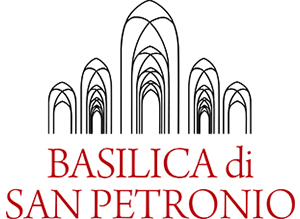UNDER RESTORATION
VIII. Chapel of St. Rocco
Previously belonged to the Ranuzzi family and then the Malvezzi.
The transept was built in 1909 by reusing terracotta columns from the S. Stefano church, as we have already seen for the transenna of the VI chapel.
On the altar, in a wooden altarpiece of the late 5th century, there is the singular painting depicting San Rocco with the dog and the commissioner (Fabrizio da Milano), made by Francesco Mazzola, called “Parmigianino” in the second half of 1527 (year of sack of Rome), a capital work for the bolognese mannerist and baroque painting.
The monumental marble statue of S. Petronius was executed by Gabriele Brunelli and was placed in Piazza di Porta Ravegnana in 1683 at the base of the Two Towers; beyond it was removed for reasons of viability and transported here in 1871.
The chapel’s right wall shows the memory of Mauro Tesi, a genius anti-baroque architect-decorator, who died at only 36 years of age in 1766.
The memory is made by a group of friends of the deceased, interested as him in the rules of the incipient neoclassicism.
Carlo Bianconi planned the memory and sculpted the right candlestick and the bottom cupboard Filippo Scandellari painted the allegory of the painting with the statue of the Artemide of Ephesus, Domenico Piò the two putti, Sebastiano Cavina the left candlestick and Filippo Balugani is the big medallion with the portrait of the deceased.
Underneath the memory there is a 18th century confessional fine carvings and truly monumental proportions, in walnut.
The glass rounds were executed in 1926 by Achille Casanova (1926).
In the nearby pillar of the main aisle there is a votive fresco representing S. Vincenzo Ferrer made by Tommaso Garelli in 1467. At this pillar was the temporary main chapel built in 1462-1479.
Turn back to The Chapels

